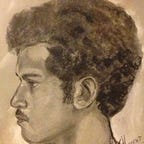Inner Resources: Knocking on the Door of Jim Crow
Those under sixty years old likely have no living memory of the Jim Crow South. Mine is growing ever more dim but I can still recall a visit to the Durham Theater in 1959 or 1960 to the great Steve Reeves playing “Hercules.”
When we arrived at the ticket booth I sensed something different — something uneasy and awkward from my parents — and maybe my older siblings.
It was suddenly not a carefree lark like the visits to our small theater in the Saint Paul suburb where I grew up.
And when we entered the theatre, we were all literally ushered to our balcony seats where a phalanx of white uniformed teenagers seemed to stand guard at a curtain — dividing us from the rest of the world. For me, Hercules was never the same.
This was the world of Southern Jim Crow in its genteel clothes of buttons and epaulettes at an afternoon matinee. But it, as we all know, had even darker and more vicious faces.
American Jim Crow was no less a form of apartheid than it was in South Africa before majority rule. The only difference was that once African Americans reached the North, the rigid rules of racial separatism were not enforced by law, but often were carried the potent force of social custom and economic exclusion.
In most Northern communities, such as the suburbs of Minneapolis and Saint Paul, racial and religious covenants written into the deeds and and documents of title created contractual limitations for Black and Jewish Minnesotans — despite the claims that the “North is different.”
Informal mechanisms such as the use of “redlining” meant that Black veterans would often struggle to own or build a home simply because the VA loans suddenly were too risky for traditionally Black neighborhoods.
But in the North, the absence of formalized legal segregation combined with informal tools of exclusion may have been as pernicious as the fiercer de jure legal separation. in the South.
The plain and open exclusion of Black Americans from full participation in the public world of the South would mean that in places like North Carolina, Blacks would build and establish their own private businesses and education facilities; they would develop their own professional class beyond the clergy and community service businesses.
The development of a Black professional class, which would include insurance brokers, bankers, physicians and lawyers, would largely be the source of a Black political class in the South.
Young lawyers trained in the South, such as Maynard Jackson and Floyd McKissick , would. help to build the political and business community in Atlanta and the South that would send Julian Bond and John Lewis into national political scene.
They had lived in the world of Southern segregation and now the Nation would be changed forever.
-Albert Turner Goins
